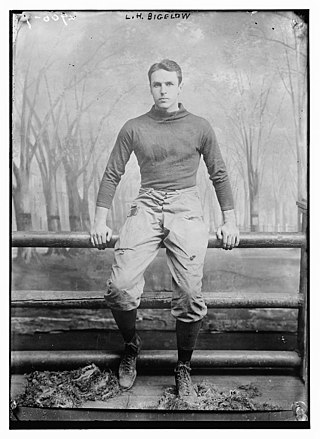
Skull and Bones, also known as The Order, Order 322 or The Brotherhood of Death, is an undergraduate senior secret student society at Yale University in New Haven, Connecticut. The oldest senior-class society at the university, Skull and Bones has become a cultural institution known for its powerful alumni and various conspiracy theories. It is one of the "Big Three" societies at Yale, the other two being Scroll and Key and Wolf's Head.

Yale College is the undergraduate college of Yale University. Founded in 1701, it is the original school of the university. Although other Yale schools were founded as early as 1810, all of Yale was officially known as Yale College until 1887, when its schools were confederated and the institution was renamed Yale University. It is ranked as one of the top colleges in the United States.

The Scroll and Key Society is a secret society, founded in 1842 at Yale University, in New Haven, Connecticut. It is one of the oldest Yale secret societies and reputedly the wealthiest. The society is one of the reputed "Big Three" societies at Yale, along with Skull and Bones and Wolf's Head. Each spring the society admits fifteen rising seniors to participate in its activities and carry on its traditions.

William Huntington Russell was an American businessman, educator, and politician. Notably, he was a co-founder of the Yale University secret society Skull and Bones, along with Alphonso Taft.

Wolf's Head Society is a senior society at Yale University in New Haven, Connecticut. The society is one of the reputed "Big Three" societies at Yale, along with Skull and Bones and Scroll and Key. Active undergraduate membership is elected annually with sixteen Yale University students, typically rising seniors. Honorary members are elected.
Book and Snake or The Society ofBook and Snake is a secret society for seniors at Yale University. It was established in 1863 and is the fourth-oldest secret society at Yale. It is considered one of the "Big Three'' of the societies at Yale, along with Skull and Bones and Wolf's Head.

St. Anthony Hall or the Fraternity of Delta Psi is an American fraternity and literary society. Its first chapter was founded at Columbia University on January 17, 1847, the feast day of Saint Anthony the Great. The fraternity is a non–religious, nonsectarian organization. In 1879, William Raimond Baird's American College Fraternities characterized the fraternity as having "the reputation of being the most secret of all the college societies." A modern writer says the fraternity is "a cross between Skull and Bones and a Princeton eating club, with a large heaping of Society and more than a dash of Animal House." Nearly all chapters of St. Anthony Hall are coed.

Jacob Weisberg is an American political journalist, who served as editor-in-chief of The Slate Group, a division of Graham Holdings Company. In September 2018, he left Slate to co-found Pushkin Industries, an audio content company, with Malcolm Gladwell. Weisberg was also a Newsweek columnist. He served as the editor of Slate magazine for six years before stepping down in June 2008. He is the son of Lois Weisberg, a Chicago social activist and municipal commissioner.

Brothers in Unity is an undergraduate literary and debating society at Yale University. Founded in 1768 as a literary and debating society that encompassed nearly half the student body at its 19th-century peak, the group disbanded in the late 1870s after donating its collection of books to help form Yale's central library. It was revived in 2021 as a secret society by members of the senior class and alumni.
Manuscript Society is a senior society at Yale University in New Haven, Connecticut. It is reputedly the arts and letters society at Yale.
There are many collegiate secret societies in North America. They vary greatly in their level of secrecy and the degree of independence from their universities. A collegiate secret society makes a significant effort to keep affairs, membership rolls, signs of recognition, initiation, or other aspects secret from the public.

Richard Dudley Hubbard was a United States representative and the 48th Governor of Connecticut.

Linonia is a literary and debating society founded in 1753 at Yale University. It is the university's second-oldest secret society.

Lucius Horatio "Ray" Biglow III was an American football player and coach. He played right guard for Yale University from 1905 to 1907. He was selected as an All-American in both 1906 and 1907 and served as Yale Bulldogs football coach in 1908.

James Joseph Hogan was an Irish-American college football player. A member of the Yale Bulldogs football team from 1901 to 1904, he was recognized three times as a consensus All-America selection. He was posthumously elected to the College Football Hall of Fame in 1954.
George Ingersoll Wood was an American Congregationalist clergyman and a founding member of Yale's Skull and Bones Society.

The Torch Honor Society, also known as Torch, is a student secret society at Yale College that was initially established in 1916 and reformed in 1995. Its members include former President George H. W. Bush and William F. Buckley Jr.

Watson Robertson Sperry was an American newspaper editor and diplomat.

John Manning Hall was an American lawyer, politician, judge, and railroad executive from Connecticut. His son, John L. Hall, co-founded the law firm Choate, Hall & Stewart.

Spade and Grave (S&G), also called S.L.M., is a senior secret society at Yale University in New Haven, Connecticut. Founded in 1864, it is one of Yale's oldest societies.

















